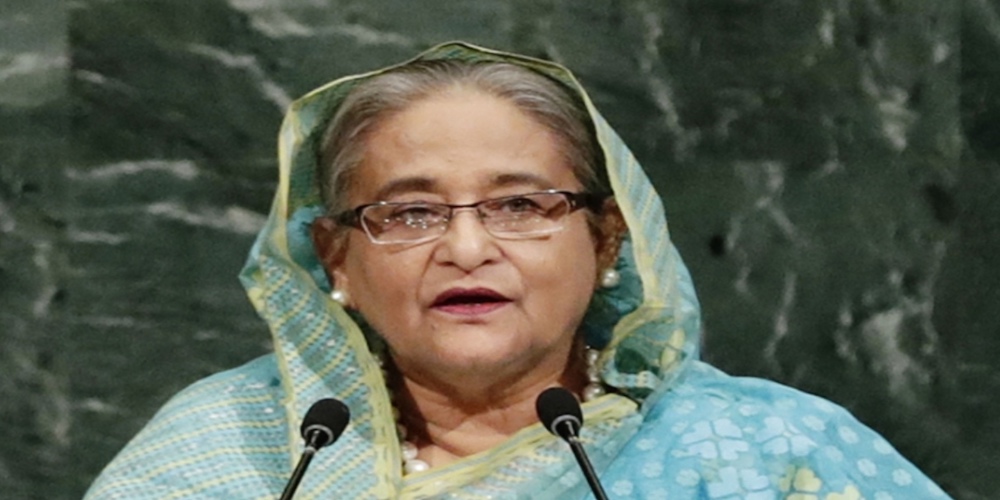RIGHT ANGLE – Sustaining the Bangladeshi Miracle

Sri Lanka may have the best Human Development Index (HDI) in South Asia, but it has a lot to learn from Bangladesh. If one takes away India, the largest country in the region, it is Bangladesh that should be the role model of others in the subcontinent.
As one writes this piece, Indian Foreign Secretary Harsh Vardhan Shringla is in the midst of an official visit to Sri Lanka from. What is a matter of concern is that .Sri Lanka is now under a “National Food Emergency”. Colombo does not have enough foreign exchange to import vegetables and other food items, which they did not give much importance to grow at home in the past in adequate quantities. Their economy, which was predominantly based on tourism and exports of tea and garments, has been badly hurt by the Covid-19 virus. And worse, the Sri Lankan rulers overspent on developmental activities by over borrowing as loans from China proved easy to get; but now is the time of repaying in which the Chinese-terms are very difficult to gloss over.
In fact, few months back Sri Lanka turned to Bangladesh, not India, for help. Bangladesh’s central bank approved, in principle, a $200 million currency swap deal for Sri Lanka, intended to bolster the latter’s dwindling foreign exchange reserves.
There are sound reasons as to why Bangladesh’s growth model in recent years should be neighbours’ envy. In the ongoing Golden Jubilee year of its independence, Bangladesh, indeed, has several reasons to be proud of. Despite being hit by the Covid 19, Bangladesh economy, according to the Asian Development Bank, is expected to grow by 5.5% in 2021 and 6.8% in 2022. Bloomberg’s COVID-19 resilience ranking has placed Bangladesh 24th out of 53 economies in the world that are worth over $200 billion.
GDP per capita had grown in Bangladesh by 9% over the past year, rising to $2,227. Viewed thus, Bangladesh today is richer than even India! India’s per capita income in 2020-21 was a mere $1,947. Indeed, Indian GDP was shrinking even before it was hit by the Covid-19. But that was the time when Bangladesh was the world’s seventh fastest growing economy, with a steady growth of its GDP by 8 percent every year.
In fact, Bangladeshis are now not only wealthier but also healthier and better educated, compared to many in the subcontinent. Latest figures available show that 98% of Bangladeshi children finish primary school. Infant mortality has plunged. And significantly, compared to India and others, the employment of the women in the labour force, the key to the development, is the most heartening feature in Bangladesh.
It needs to be appreciated that behind all these proud performances, there have been prudent governance and economic management by the regime led by Prime Minister Sheikh Hasina. The fiscal management has been sensible. The Budget-deficit has been not allowed to 5.0% of GDP. Private sector has been able to borrow from the financial system and invest. Cottage sized creative undertakings have been included in the MSME category, making it cottage, micro, small, and medium sized enterprises (CMSMEs). They have been able to create nearly 8 million jobs and contribute as high as 25 percent to the country’s GDP.
Above all, during the Covid-time, the Hasina government has provided a stimulus package, which, experts say, is better that that of the Modi government in the neighbouring India. She has doled out economic and social protection schemes to the agriculture sector, CMSMEs, ready-made garment (RMG) sector and other industries.
Now, the real challenge before Bangladesh is how to sustain the positive momentum. All told, Bangladesh is still too dependent on its world-class garment industry, other than the foreign remittances. The garment industry is arguably the world’s second largest, accounting for 11% of Bangladesh’s GDP and and 80% of export revenue. But, as Sri Lanka has shown, the garment industry all over the world is not doing well because of the fewer buyers, thanks to the Covid-19 (purchasing power in the developed countries has also declined).
Even otherwise, there has been a relative decline in the export value. For instance, the export value was 20 percent in 2012. But in 2019, it had fallen to 15 percent. Secondly, as a Least Developed Country (LDC), Bangladesh exports have some tariff advantages in the Western markets; but these may not be the case when the country progresses to be a “Developing Country”.
In order to maintain its growth momentum, Bangladesh has to find ways towards the exports of commodities of higher value like the tiger- economies in South Korea, Taiwan and Southeast Asian nations. Here, the present growth story of Vietnam can provide some valuable lessons.
Bangladesh‘s CMSMEs are doing well, no doubt. But their export-value remains much to be desired. At the moment, their vision is limited by domestic market, which remains protected in more senses than one. But as the globalisation of economy is going to be unavoidable, the economy has to further open up and diversified commodities become more economical as well as competitive. The commodities need to be parts of the global value chain (GVC). And for this, there is the need of more and more foreign investments.
Diversification will be there when more and more private industries enter the scenes either on their own or with foreign collaborations. And this is exactly what Vietnam is doing at the moment. In fact, Vietnam is following the experience of Korea and other East Asian economies which have successfully demonstrated how early diversification leads to higher-value manufacturers. All these countries began their ascent up the income ladder by producing light manufactures but then quickly branched out into complex products.
But foreign investments need a changed business environment in the country. As mentioned above, the Bangladesh economy is a protected one, something exemplified by the fact that while the country was ranked 65th of 155 countries in 2006 in the World Bank’s Doing Business index, by 2020 it had gone up to 105th by the World Economic Forum’s Global Competitiveness Index.
However, what is comforting is that Prime Minister Sheikh Hasina is conscious of this fact. Her government seems prepared for the transformation. Two recent developments are positive indications in this regard.
One is that the e government of a post-Brexit Britain has expressed confidence in the Hasina regime to attract the British capital for investment in business and infrastructure that will play an increasing role in powering the next stage of Bangladesh’s growth after the country’s graduation from the least developed category. London is sanguine that developing new channels of investment finance, both domestic and international, will spur business growth and job creation in Bangladesh.
The second development is the signing of a framework on trade and investment between Bangladesh and Australia. Known as the Trade and Investment Framework Arrangement (TIFA), the first of this kind between Australia and Bangladesh in the last five decades, is expected to provide a platform for institutionalised economic interactions and to open newer opportunities for trade and investment between the countries.
It is reassuring that the Hasina regime is recognising that private entrepreneurship and investment are inseparable from growth and for this it is imperative that there is a stable and predictable policy environment on the one hand and firm commitment to openness and to growth backed by credible political and legal institutions on the other.



